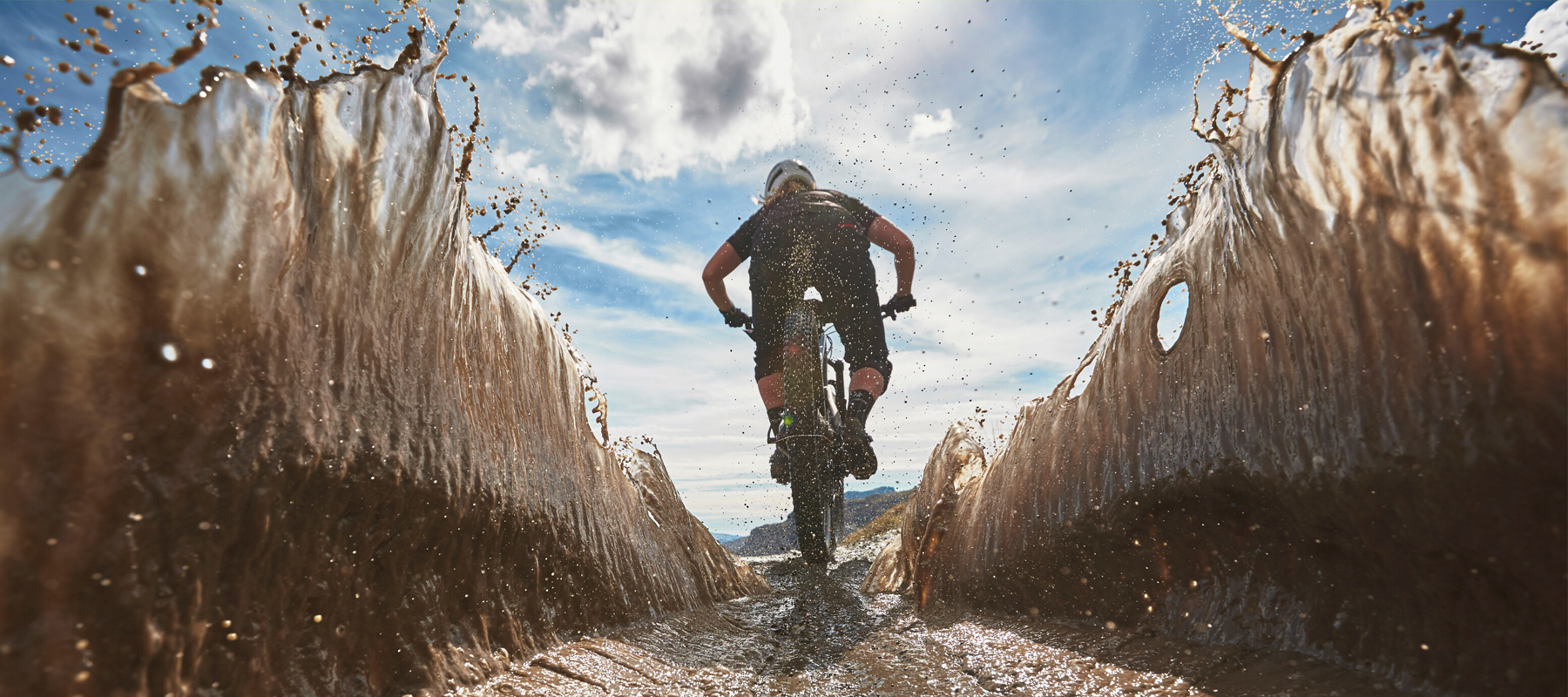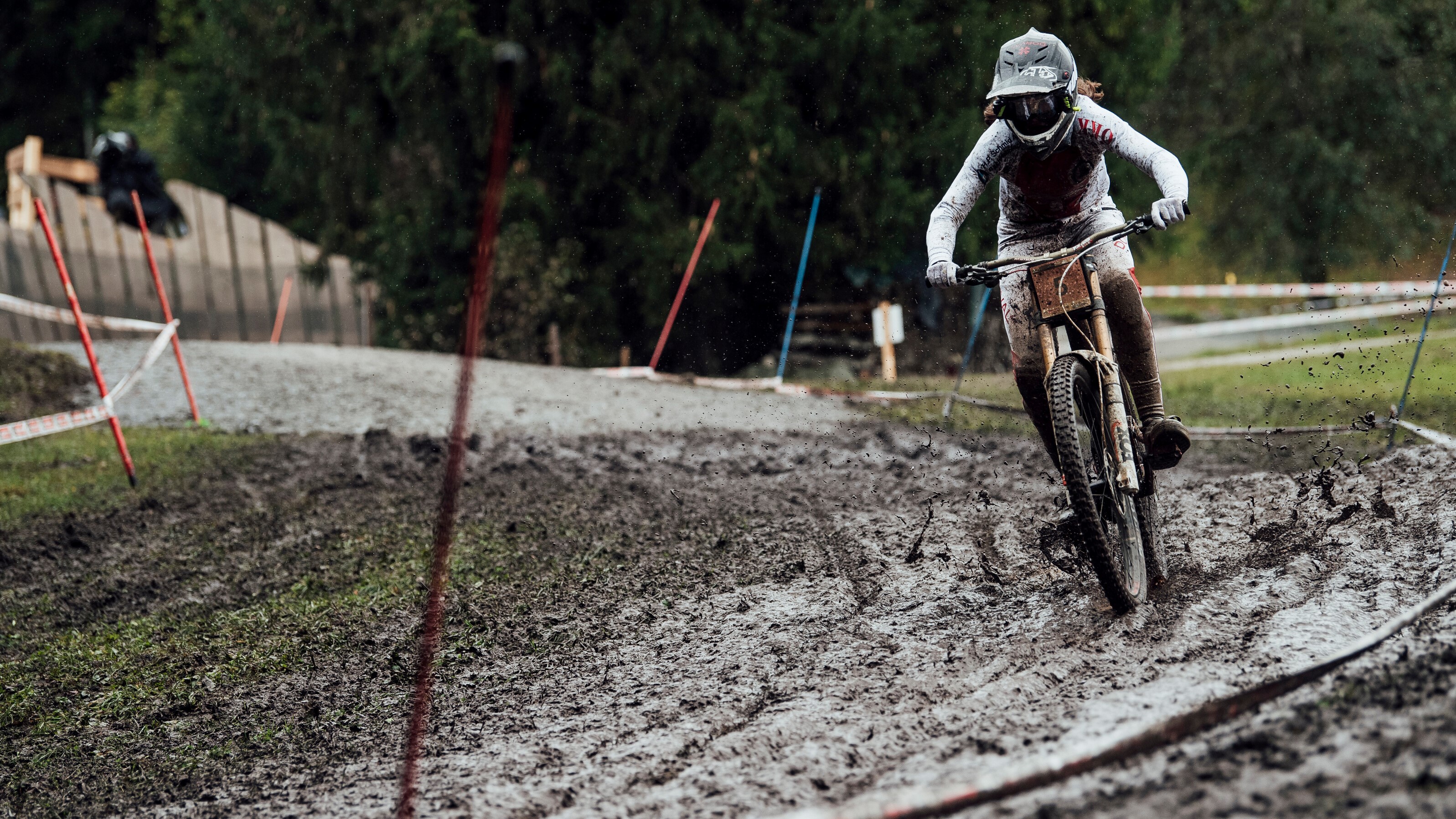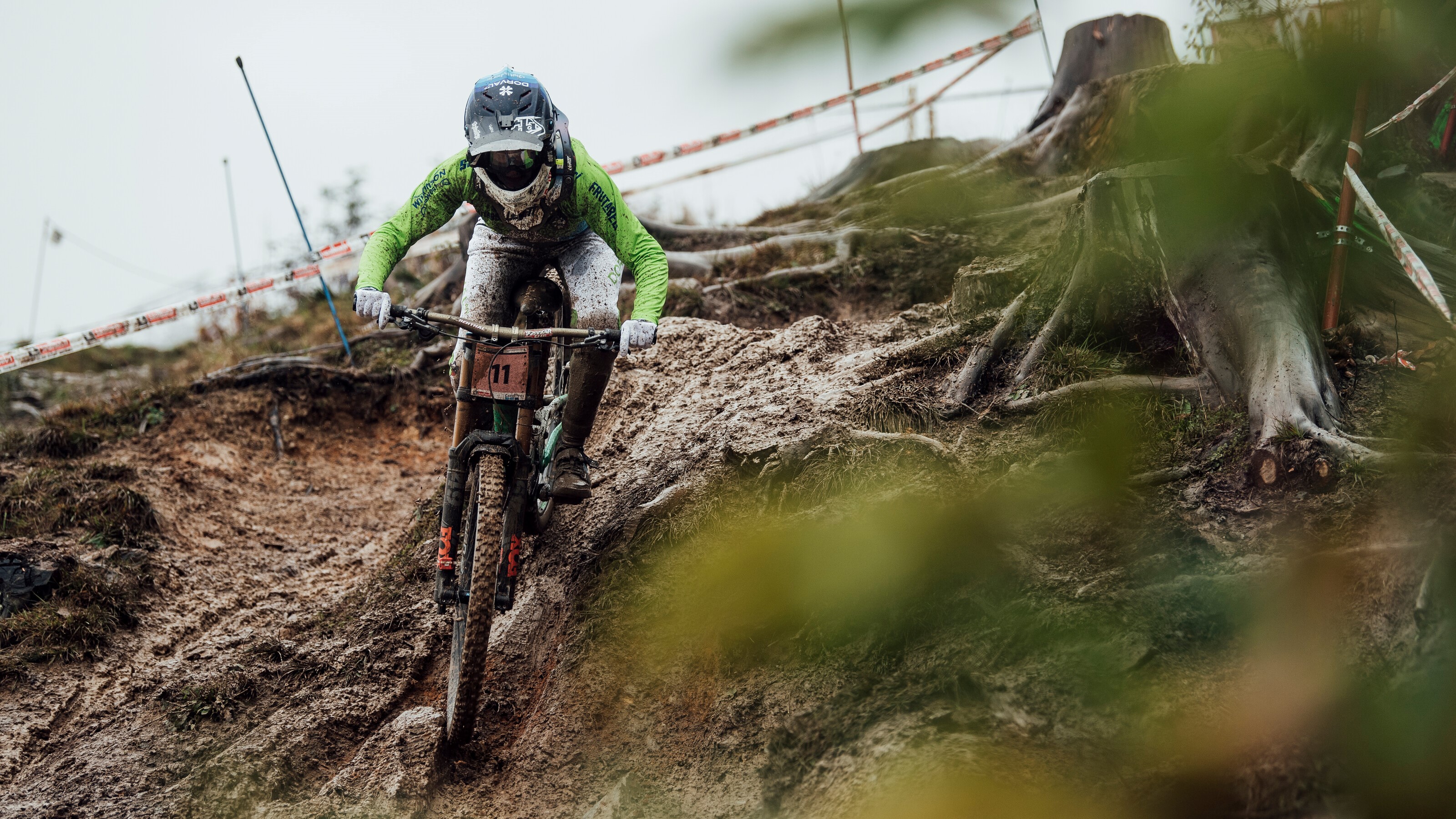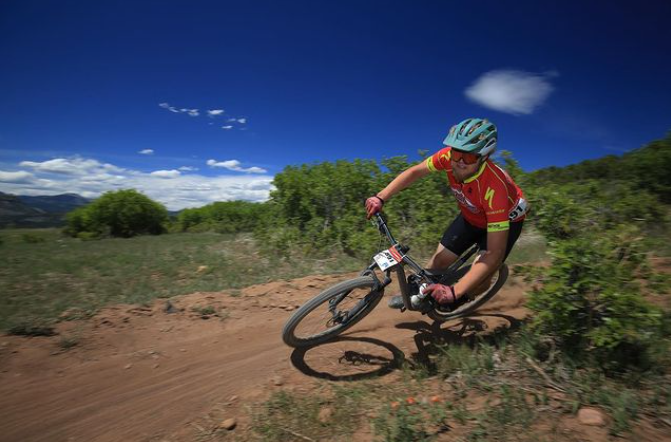How to ride in the mud and rain – master riding on slick, sodden trails
From riding techniques to clothing options, here are our tips for mountain biking in soggy conditions

Mountain biking truly gets us out into the elements, and riding in the rain can be an entirely different experience to riding in the dry. Those once-dry and hardpacked trails will become wet and sloppy, surfaces will feel more slippery, and if the weather sneaks up on you and catches you unprepared, your fun day out on the bike could turn into a soggy and miserable slosh-fest.
But it doesn't have to be this way. Modern mountain bike equipment and gear can make a rainy day ride feel like a pleasant sunny afternoon, since it's designed to protect you from the elements. That means we can ride more often since we won't be writing off the wet days and sticking to fair weather, and that can only be good news.
Caution should still be taken though, as the terrain you ride will dictate how difficult things get when it starts to rain. It's worth giving our 'how dangerous is mountain biking?' guide a good read to familiarize yourself with different crash scenarios and how to avoid them.
Two of the most important aspects of riding in rainy and muddy conditions are technique and clothing – you can read about improving your mountain bike skills in our tips for beginner mountain bikers while everything in terms of the correct gear is covered in mountain bike essentials.
Whatever the terrain, there are some key things you can do to make rainy day mountain biking a lot more fun. Read on to see our tips for riding in the rain.
Should you ride in the rain?

We all love to ride, and a little weather won't stop that desire to get out there. But it's important to consider where you are riding when it's wet and muddy. At a certain point, it's best to go home rather than risk annoying damage to the surface of the trail.
The general rule is if your tires are creating ruts in the trail surface, you shouldn't be riding. This is because when the trails dry, the rut will harden, creating a giant trough down the center of the trail. A trail builder will have to go back and painstakingly correct the damage.
However, how well a trail handles rain is determined by soil type and geography. Certain regions, like the UK and British Columbia, feature rainy climates where the soil soaks up water well. For this reason, lots of the trails can be ridden in the wet. Some trails in the same system or area will ride better or worse in the wet. Trails that have sandy or gravely soil are better bets for riding in the wet.
If the weather and trail conditions are just too bad, there's nothing wrong with breaking out the road bike or finding another activity to occupy your time for a day or two.
Bike handling in the wet

Successfully riding a trail in the rain is all about bike handling skills. Obviously, there will be less traction, but there are strategies for staying upright on your bike.
When you start off on a ride, go slower than you normally would. Test out the conditions and see how your tires respond to the trail surface. Depending on how it feels, you can go faster or slower, depending on your comfort level.
One of the key skills is avoiding slippery roots and rocks, as they can be the most treacherous parts of a trail. This can be easier said than done, and this is where knowing a trail well can come in handy. If you can find a way around the slippery roots and rocks, that's great. But sometimes you have to go over them, either by jumping over them or picking a line through.
You want to line up your front wheel as close to a 90-degree angle as possible to the root you're going to ride over. If you are going at a more diagonal angle, your tire may slide along the root and send you to the ground.
When you are navigating roots and rocks, stay off the brakes as well. Slow down before the obstacles, open your brakes, and then brake again if you have to when you are back to safe soil. The act of braking, and therefore slowing down your tires when they are in contact with a slippery object, will cause the tires to slip.
What to wear

Clothing options can make the difference between a great ride and a terrible ride. What you wear mainly comes down to temperature.
In warmer wet conditions, you can get away with wearing only a light waterproof shell as found in our guide to the best mtb jackets, or maybe a gillet, but things get more complicated in the winter when it's really cold.
Dressing for cold and wet weather is all about layering. The name of the game is wearing multiple, thinner layers rather than one thick piece of clothing. The key to staying warm is trapping air between layers of clothing. Plus, this way you can take off or put on layers depending on how you are feeling during the ride.
It's hard to recommend a one-size-fits-all solution because everybody's bodies and preferences are different. But for cold weather, we'd recommend a warm base layer under a winter jersey. Then you can add a waterproof hardshell over that. Down below, you can wear the best mountain bike pants, and there are also neoprene gloves for your hands and booties to go over your shoes, which can go a long way in keeping you warm and happy.
Bike maintenance

Riding in the wet also takes a specific toll on your bike. When you ride in wet conditions, water and mud, along with other trail grime, will splash up onto your bike. This can get in every little crevice, so it's important to wash your bike after you ride as well as apply some of the best bike chain lubes to keep everything running smoothly.
One area of concern is your drivetrain. Muck and grime will coat your chain and cassette, causing poor shifting performance and lead to wear over time.
Your suspension seals can also gum up, and over time, water and dirt can get into frame pivot bearings as well.
Essentially, anytime your bike is exposed to lots of water and mud, it will decrease the lifespan of components if not cleaned well. That's why it's a good idea to have some basic bike washing equipment at your house. For more guidance, read our guide on how to clean a mountain bike or browse our guide to the best pressure washers for mountain bikers.
Ryan Simonovich has been riding and racing for nearly a decade. He got his start as a cross-country mountain bike racer in California, where he cultivated his love for riding all types of bikes. Ryan eventually gravitated toward enduro and downhill racing but has also been found in the occasional road and cyclo-cross events. Today, he regularly rides the trails of Durango, Colorado, and is aiming to make a career out of chronicling the sport of cycling.
Rides: Santa Cruz Hightower, Specialized Tarmac SL4

